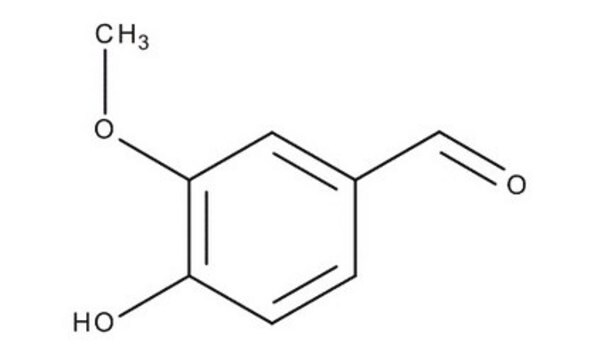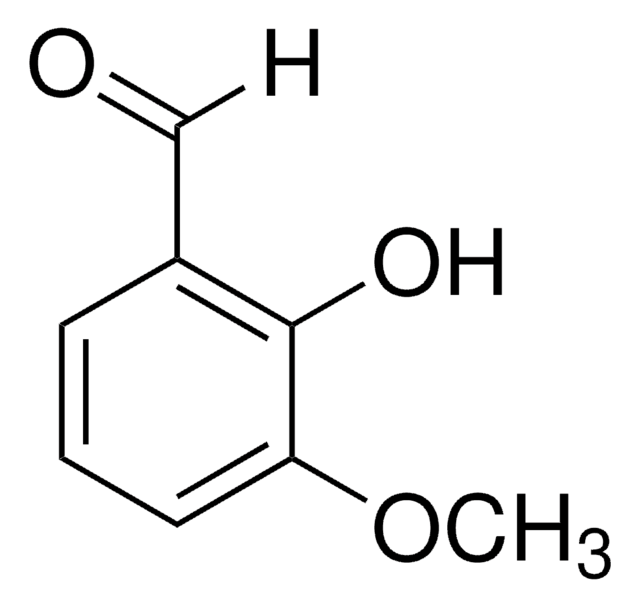Kluczowe dokumenty
V1104
Vanillin
ReagentPlus®, 99%
Synonim(y):
4-Hydroxy-3-methoxybenzaldehyde, Vanillic aldehyde
About This Item
Polecane produkty
gęstość pary
5.3 (vs air)
Poziom jakości
ciśnienie pary
>0.01 mmHg ( 25 °C)
linia produktu
ReagentPlus®
Próba
99%
Postać
powder or crystals
tw
170 °C/15 mmHg (lit.)
mp
81-83 °C (lit.)
rozpuszczalność
ethanol: soluble
grupa funkcyjna
aldehyde
ciąg SMILES
COc1cc(C=O)ccc1O
InChI
1S/C8H8O3/c1-11-8-4-6(5-9)2-3-7(8)10/h2-5,10H,1H3
Klucz InChI
MWOOGOJBHIARFG-UHFFFAOYSA-N
informacje o genach
rat ... Ar(24208)
Szukasz podobnych produktów? Odwiedź Przewodnik dotyczący porównywania produktów
Opis ogólny
Zastosowanie
Informacje prawne
Hasło ostrzegawcze
Warning
Zwroty wskazujące rodzaj zagrożenia
Zwroty wskazujące środki ostrożności
Klasyfikacja zagrożeń
Eye Irrit. 2
Kod klasy składowania
11 - Combustible Solids
Klasa zagrożenia wodnego (WGK)
WGK 1
Temperatura zapłonu (°F)
319.6 - 321.4 °F - closed cup
Temperatura zapłonu (°C)
159.8 - 160.8 °C - closed cup
Środki ochrony indywidualnej
dust mask type N95 (US), Eyeshields, Gloves
Wybierz jedną z najnowszych wersji:
Masz już ten produkt?
Dokumenty związane z niedawno zakupionymi produktami zostały zamieszczone w Bibliotece dokumentów.
Klienci oglądali również te produkty
Nasz zespół naukowców ma doświadczenie we wszystkich obszarach badań, w tym w naukach przyrodniczych, materiałoznawstwie, syntezie chemicznej, chromatografii, analityce i wielu innych dziedzinach.
Skontaktuj się z zespołem ds. pomocy technicznej







